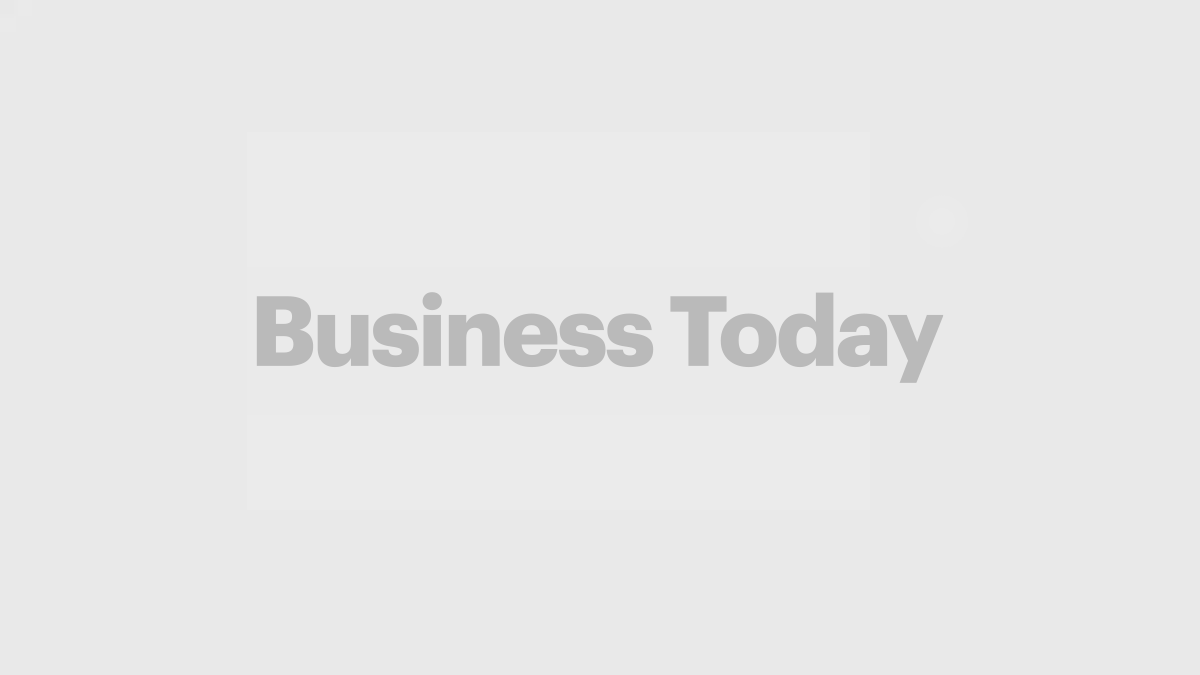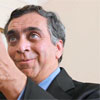The future is print 2.0 - Vyomesh Joshi


Under your leadership over the past five years, IPG has become one of HP’s most profitable divisions, with margins in excess of 15 per cent—a remarkable number in the world of hardware. So, what is it that you have done to achieve this in such a short span of time?
There are three stories in between these six years. The first of these was that earlier we had two separate businesses, Inkjet and Laserjet, but in 2001 we decided to keep a unified market focus on ‘printers’. Then, what we did was to design products for the low end of the market. Usually, when you look at platform work, we usually start at the high end and then reduce costs. Instead of that, we designed for the low end and then went up by adding new features. By doing that we added volumes. So, theoretically, if you design for the high end you might get 10,000 units of volume, and if you design for the low end you could get a million units per month. You get volumes and thus improve your cost structure. In June 2002, when we introduced this, we managed to improve our profitability significantly. A lot of car companies talk about this, they talk about using a ‘platform’ strategy, but no one had done it in the information technology industry. We had more patents for a $49 (Rs 1,960) printer than we did for a $200 (Rs 8,000) printer. And not only did that enhance our revenues, but it improved our operating profits as well, and we gained ten points of market share.
You talked about three things…
The third move came in 2004, when we realised that we need to shift from ‘printers’ to ‘printing’; instead of looking at unit growth, we should be looking at page growth. So, we looked at ‘adjacent’ markets for printing and we figured that digital photography is a big market, everybody is always taking photos, so we developed products where people could print pictures at home or at retail points. There was the high end of the copier market, so we developed advanced multi-function devices by going after companies like Ricoh and now we have a 46 per cent market share in this segment. And we continued to grow our revenues through these new markets.
What does this strategy evolve into?
Now, we are not just looking at adjacent markets but looking at all the printed pages in the world. Look at it this way: our unit market share worldwide is around 46 per cent, our competitors are less than half our size. But if you look at our page market share, and let me put that in perspective, in 2007, an estimated 48 trillion pages were printed, we have a very low market share of only 1.6 per cent.
These 48 trillion pages include copied pages and newsprint?
It includes everything, newspapers, magazines, books... And this is the market we are after. We are no longer a big fish in a small pond, rather we are a small fish in a big pond.
So, you have to convert your unit market share into a page market share?
Yes, think of all the newspapers, magazines, billboards, in fact, anything that is printed that you see, we are interested in that. So, we went from printers to printing, to what you call ‘Print 2.0’, which is really going after everything. The way we look at it is like we are in the airline business or we are in the transportation business.
 |
| "We are looking at all the printed pages in the world... We are no longer a big fish in a small pond, rather we are a small fish in a big pond” |
So, you want the world to digitise the way it consumes content?
Yes, and let me give you an example by looking at digital photography. In 1997, when the first ‘Photosmart’ printer was introduced, we asked if we are as good or better than silver halide in terms of photo technology. And we found out that we were as good as silver halide. So, once we had the right quality we started to ask if we have the right cost, and we worked on that. Then, we needed to work on time. When we started printing, a photo took two minutes, then one minute and then 10 seconds, five seconds… Once you start printing at those kinds of speeds, you could put photo printers in retail locations, and at print service providers’. We also gave people who took digital photographs the ability to share and print images online through services like ‘Snapfish’ but we also made the devices that allowed them to take prints at home.
And you also tied up with other online photo-sharing sites?
Yes, obviously we work with services like Flickr and other sites, because when you talk about photo printing it is happening on inkjet printers. Nobody is investing the massive sums of money in silver halide labs anymore. But this is not exclusive to just photos, the same shift from analogue to digital printing is happening in marketing collateral and signage.
So, all the promotional material that companies bring out like folders, background art, all of that will move digital?
Let me give you an example. After Hurricane Katrina, a pilot with United Airlines went to the affected region to do a book about the children over there (shows the book), but when it came to printing, he decided to do it all digitally on our Indigo printers. If he went to a printer, the printer would say that they need a run of 10,000 copies for it to be cost-effective. Here you can print one copy, 10 copies or 20 copies. That is the power of this. The printers nowadays can do the binding as well. So, if you go with your family to, say, a music concert and take pictures, before, during and after the concert, you can go to a store and get a small book made. There are a lot of interesting applications here. Let’s talk about signage; all the billboards that you see, those are all done on screen printers. But now you can do that all digitally, you can customise each billboard individually and do other interesting things as well.
 |
| “We crossed a $100 billion in revenues in 2007, so we are the biggest IT company in the world. I still believe there is a lot of work yet to be done” |
But on large runs, like say a magazine with 200,000 copies, digital is still not an option though?
That will be hard because cost efficiencies are not there yet. But, say, you want to have a short run customised magazine of 200 copies, or a personalised newspaper with the news you want, that is still better on digital. Right now our break-even point, that is to say where the cost of doing something digitally is equal to analogue, is 2,000 pages. So, if you do a 2,000-page job, the costs are similar. But we will move that break-even point to 4,000, 10,000, 20,000 and so on.
What you are saying is that any job above 2,000 pages is still cheaper on analogue.
Yes, but we will continue to move that point higher and higher. In signage, for example, that number is 200 one-square metre signs, if you are doing more, clearly as of now it will be better to do screen printing. But innovation both in terms of cost and speed will continue to increase that number. But in short runs, digital is really effective, small businesses in particular can print on demand and, we believe, can save up to 50 per cent of the costs they incur in printing marketing collateral. Think about it, if a product changes, a business will have to get rid of old material sometimes at quite a cost. In this case, he or she prints as much as they want and not be saddled with too much material that can drastically reduce cost.
In the past few years, IPG has also made a lot of acquisitions?
Yes, essentially to fit into our strategy of going into adjacent markets. We acquired Snapfish for digital photography, Logoworks for small and medium enterprises and marketing collateral, Indigo business for marketing collateral and so on.
And what new growth opportunities do you see?
Just look outside at all the billboards, I see those and I see opportunity. In Mexico, during the elections all the posters are done on our printers, next time in India during elections perhaps… We are also becoming more bullish on managed services for large enterprises, helping them drastically reduce printing costs. We have also entered the software space because we believe there is a lot of opportunity there, and profitability too.
You still maintain a significant share in the consumer business, but is printing at home slowly dying out?
Why should it? I mean, look at the quality of the photographs you can print at home. Why do people take pictures? To retain family moments. And your drive may fail or you might have a hard time organising your digital photographs, but the easiest way of storing them is still printing them. Of course, there will be a lot more viewing than printing, but with the rise of the internet, more printing is often done of shared images than of the original images because people very often share only the best pictures.
You said you want a bigger share of those 48 trillion pages. Where do you see IPG going in the years ahead?
We don’t think about it, because if we get another 1.6 per cent share we could double the business.
There was a lot of turmoil over at HP a year or so ago, is the company back on track?
I think things are better than ever and Mark (Hurd, HP CEO) is doing a fantastic job. Think about it, we crossed a $100 billion (Rs 4 lakh crore) in revenues in 2007, so we are the biggest IT company in the world. We have also gained share in every category from PCs to servers, so we are doing a really great job. That said, I still believe there is a lot of work yet to be done. There are a lot of costs that can be taken out and re-invested, because we can address a $1-trillion (Rs 40 lakh crore) market. We believe we have a huge opportunity.










